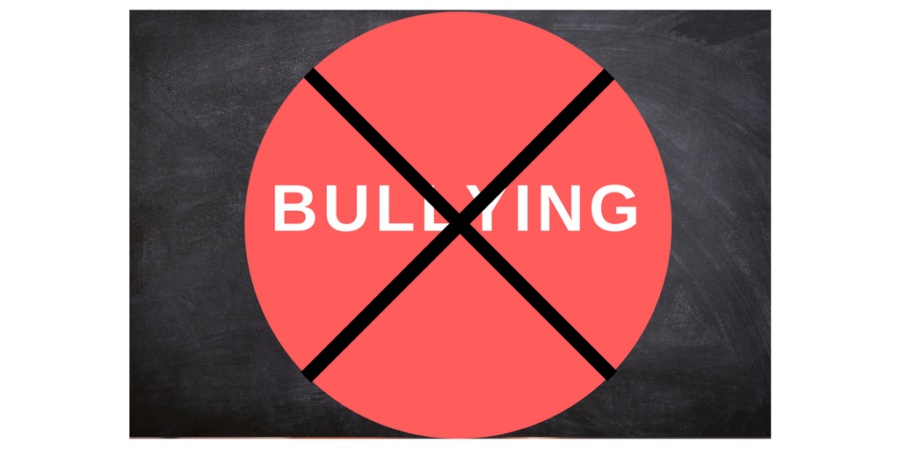Support, Report, Defend
Students expected to report bullying if they see it
May 11, 2018
For some people the hallways between classes are the perfect place to hang out with friends. For others, being in those same halls becomes a nightmare.
A nightmare that leaves the students wondering what they have done to be treated the way they are.
In the United States 1 out of 4 students is bullied according to the Megan Meier Foundation, an organization that hopes to prevent bullying.
Bullying occurs when a student, or group of students, engages in written or verbal expression, expression through electronic means, or physical conduct that is sufficiently severe, persistent and pervasive enough that the action or threat creates an intimidating, threatening or abusive educational environment for a student.
A CTHS senior was bullied for six years because of her weight and never got help. Everything started when she was eleven years old and finally stopped during her sophomore year when she decided to ask for help and talk to someone.
At CTHS, a student who has witnessed the act of bullying is to report it to an administrator or start with getting support from a counselor. Failure to do so may result in disciplinary action.
The victim shall not be subjected to discipline for failure to report. However, they can report the incident.
Students can find the counselors including, Crisis Counselor Tiffany Turner, in the counseling office in the main hallway. Turner said victims are sometimes worried about reporting a bullying incident because they’re afraid.
“When the person being bullied reports the bullying, sometimes the bully doesn’t like that,” Turner said. “Sometimes there may be retaliation, so we [counselors or administrators] spend time with the person being bullied to talk about what they can do if there is any retaliation. Essentially, they need to report it again.”
When the student spends time with a counselor or administrator, they create a safety plan. This safety plan consists of new walking routes to classes, sometimes with a person students feel safe walking to and from class with. It also includes a safe place for the student when they feel like they have nowhere else to go.
That assistance would have been helpful for the senior when she was younger, but she didn’t have it.
Things were hard, the student said, because she was treated differently from everyone else
Along with schools having an issue with on-campus bullying, they also face a broader issue with cyberbullying. About nine percent of students ages 12–18 reported being cyberbullied at school during the school year according to the Foundation.
“I didn’t know what cyberbullying was until one of my friends found some messages on Instagram,” the senior said. “They started asking me how often I received this kind of message and finally made me report it to a counselor.”
If her friends had never confronted her, the senior said she would have never realized how serious it was and would have kept it to herself.
“Cyberbullying takes it to a whole new level,” Turner said. “Everyone has a phone and social media these days. When I was a kid bullying happened at school, so you were able to go home and get a break from it. Now it can follow you home. It is at your dinner table, in your bedroom, at other events, it can be all over. This is why it is so important to report it.”
Chemistry teacher Ebony Love said it’s hard for teachers, admins and counselors to catch or prevent cyberbullying which can cause emotional distress for the student due to the fact that it is hard for the teacher to know what’s going on on the student’s phone.
“I had a lot of students coming to my class really happy and excited, but then because of something that happened on their phone, left the class depressed and upset,” Love said. “There is not an easy way to stop cyberbullying.”
In the United States approximately 43 percent of students report experiencing cyberbullying during their lifetime.
“[The bullying] was depressing and exhausting,” the student said. ” I was tired of it. I was always trying to figure out what I did wrong.”
When a student struggles with becoming physically and mentally exhausted as well as depressed, the counselors have other ways for the student to get help.
“When I can see that something is taking an emotional toll on the student I recommend outside help,” Turner said. “Part of my job is to connect people to outside resources if they need it. Counseling is one of those resources and is a great way to get support after bullying. We have many great counselors in our community; help is more available than ever.”
Turner said students need to be responsible for each other when adults don’t see the problem. The students who are bystanders need to talk to the bullied about reporting the problem. If the bullied doesn’t want to report it, the bystander still should report it.
Turner said that bystander involvement is key to successfully addressing bullying on campus.
“At Chisholm Trail we set the culture,” Turner said. ” As leaders, students need to step up and say, ‘hey this isn’t okay, this isn’t what we do here. We’re kind, we’re not rude, we’re not bullies.'”





